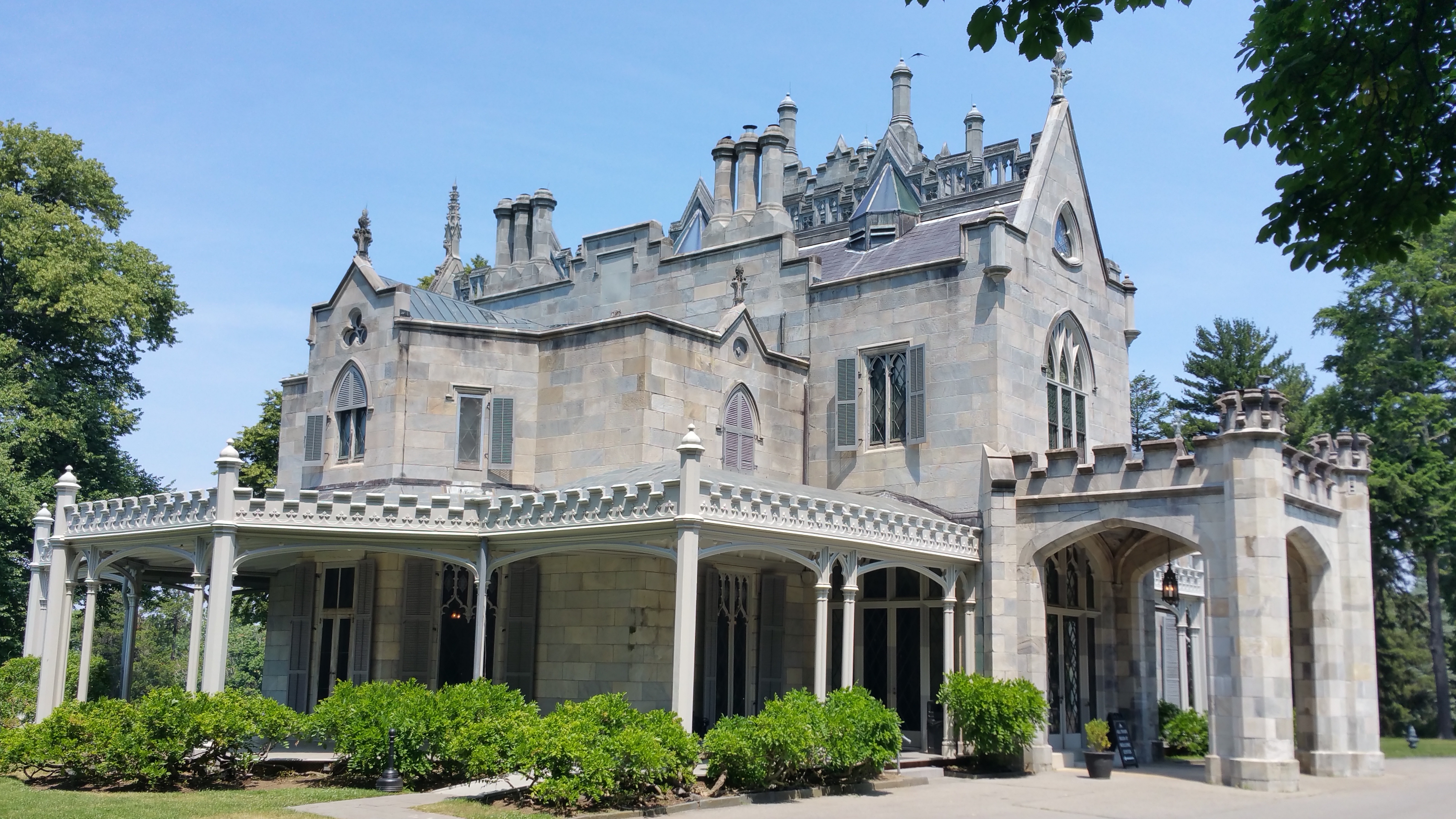
Lyndhurst- Tarrytown, NY
Lyndhurst is an absolute architectural dream. Plucked straight out of the English countryside, it is without question one of the finest examples of Gothic Revival architecture in the United States. Former home of universally detested Robber Baron Jay Gould, the estate offered a retreat for the already isolated tycoon. While he may have had no friends, he did have a ridiculous amount of money, which allowed him to purchase one of the finest houses in all the land, and fill it with beautiful objects.
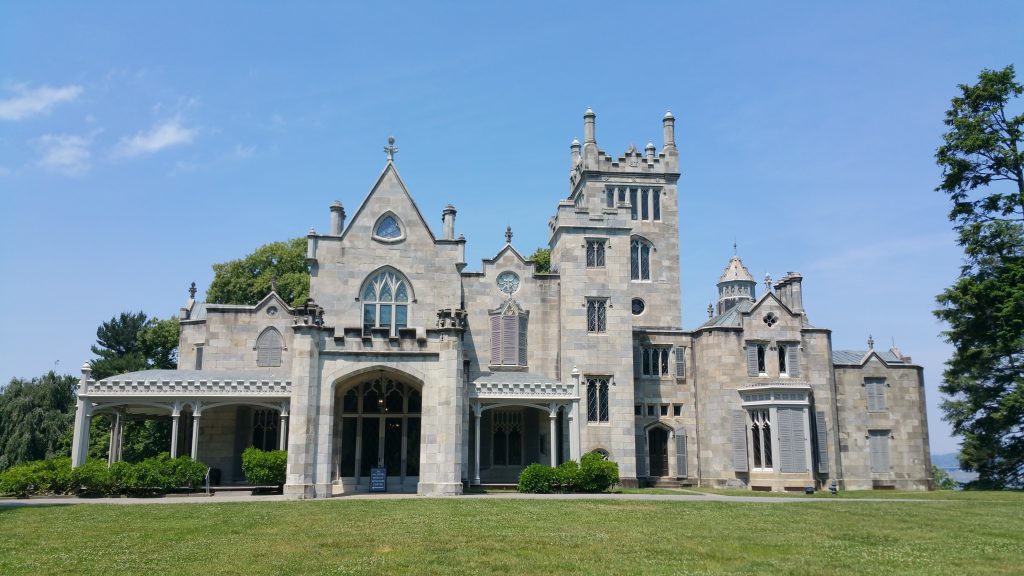
Originally built as a country villa in 1838 by renown architect Alexander Jackson Davis for former New York City mayor William Paulding, its Gothic Revival style wasn’t exactly appreciated at the time. Derided by critics as Paulding’s Folley, its whimsical turrets and asymmetrical facade stood in stark contrast to the neighboring Classic Revival mansions.
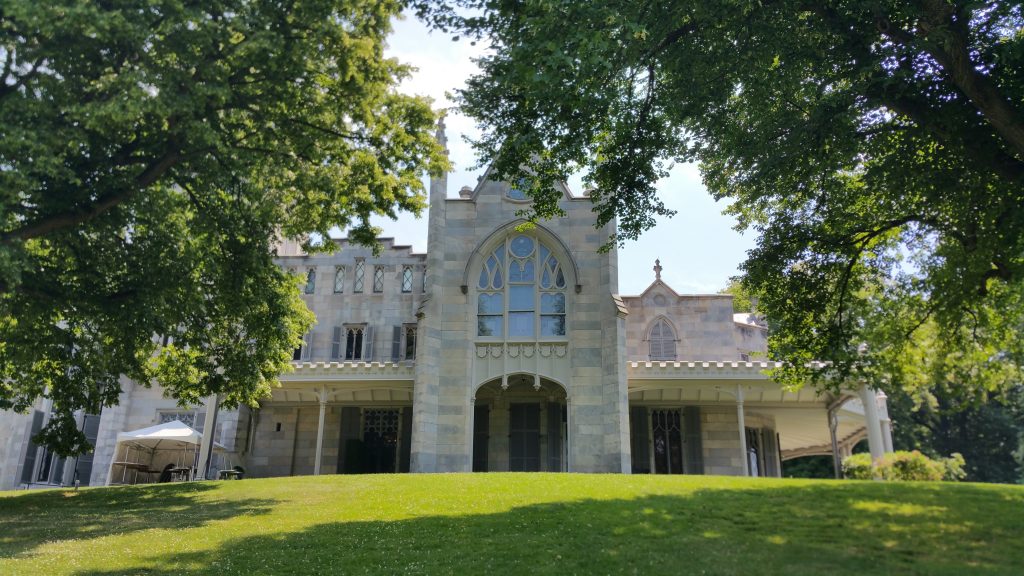
In 1864, Davis returned, doubling the size of the mansion for the second owner, George Merritt; taking two years, this project yielded the magnificent country home that exists today. Gould purchased the 40 room, 400 acre country estate in 1880 from Merritt’s widow for $255,000; he used it only seasonally, occupying it just a few months out of the year.
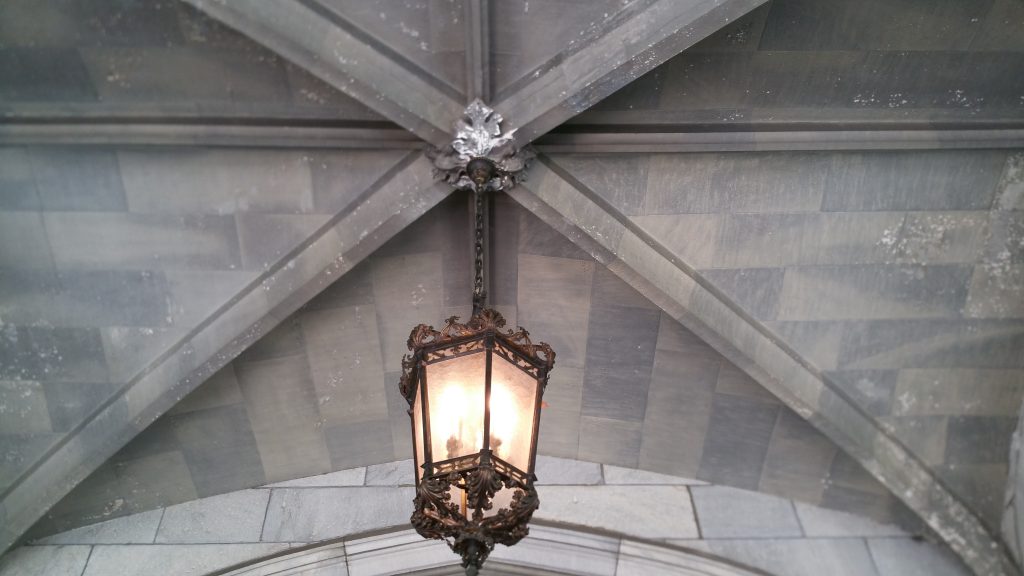
Built of elegant gray limestone quarried by prisoners in nearby Ossining, the final product was an imposing yet delicate mansion, with fantastic views of the Hudson River. Inside, the home boasted soaring vaulted ceilings, arched stone doorways, parquet floors, and over 100 stained glass windows, including some designed by Louis Comfort Tiffany.
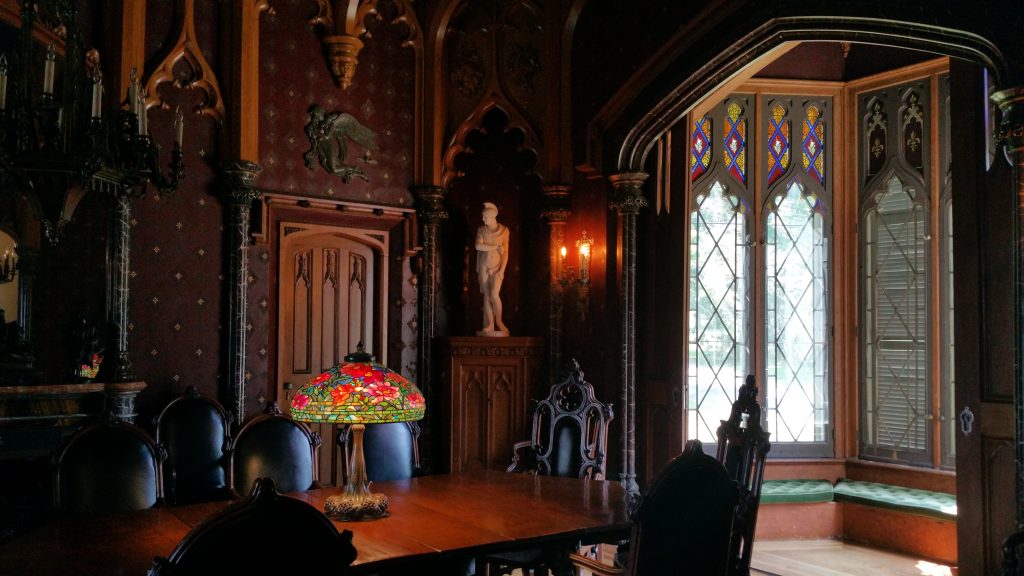
The first floor contains several surprisingly small rooms, relatively speaking, including a drawing room, reception room, office, library and dining room. By far, it is the ornate dining room that steals the show. With gold stenciled walls accentuated with carved wood, faux marble trim, and an intricate filigreed oriel window, it is an absolute masterpiece.
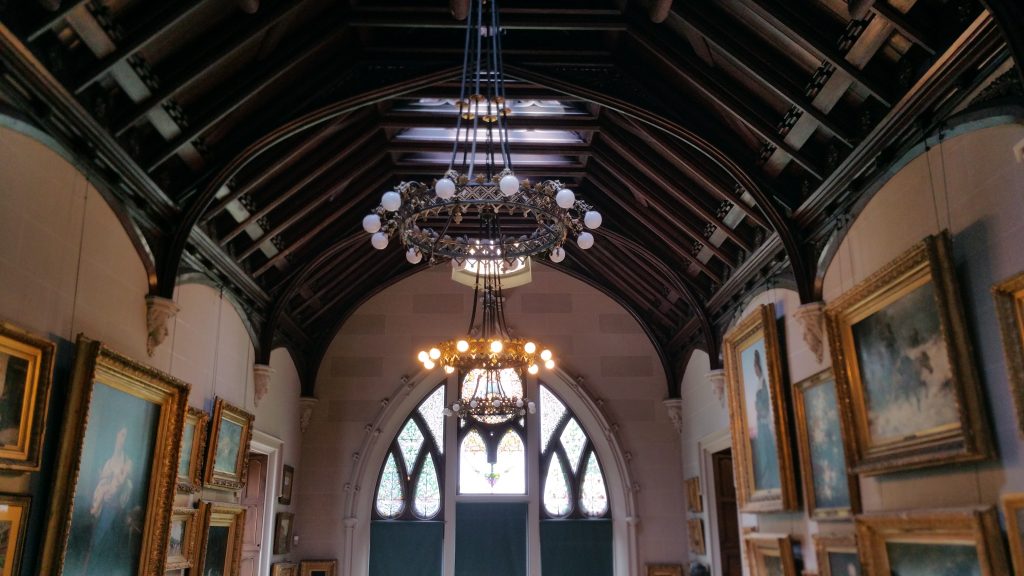
The second floor houses several bedrooms, in addition to one of the house’s most dramatic spaces, the Gallery. Originally designed as a library, the space was converted by Jay Gould to showcase his collection of 19th century artwork. His original collection remains on display, as the entire house and its contents were gifted to the National Trust for Historic Preservation upon the death of Gould’s daughter in 1961. Among the other treasures that remain are original furnishings designed by architect A.J. Davis for the house, including an elaborate carved Gothic bed.
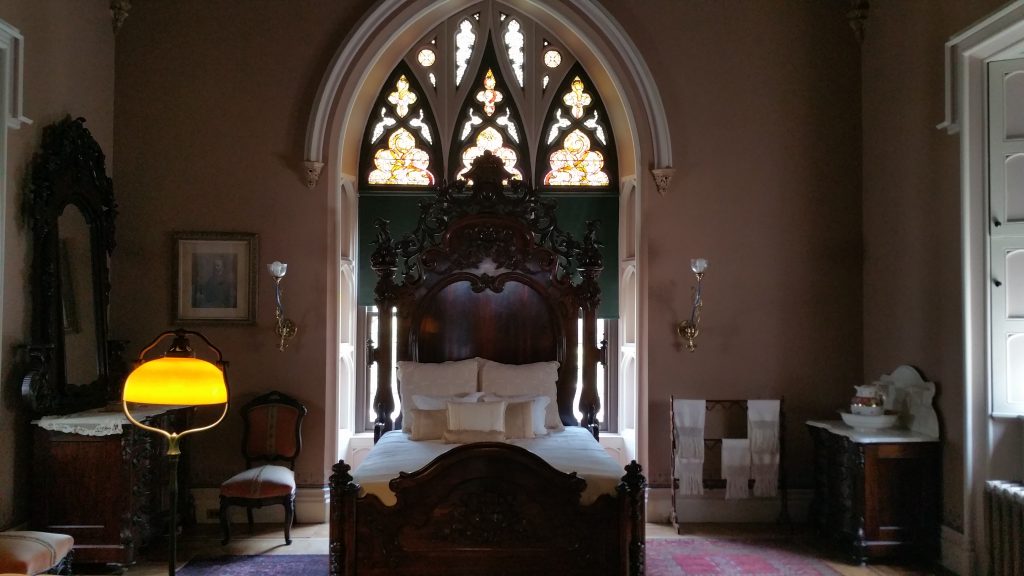
Unlike some mansions, many of Lyndhurst’s most striking spaces can be found on the second floor. Each bedroom boasts a unique design, all with highly stylized soaring ceilings, elaborate stone detailing, and spectacular stained glass. Gould’s daughter’s room is perhaps the most whimsical, with a periwinkle painted sky overhead, complete with gold leaf stars.
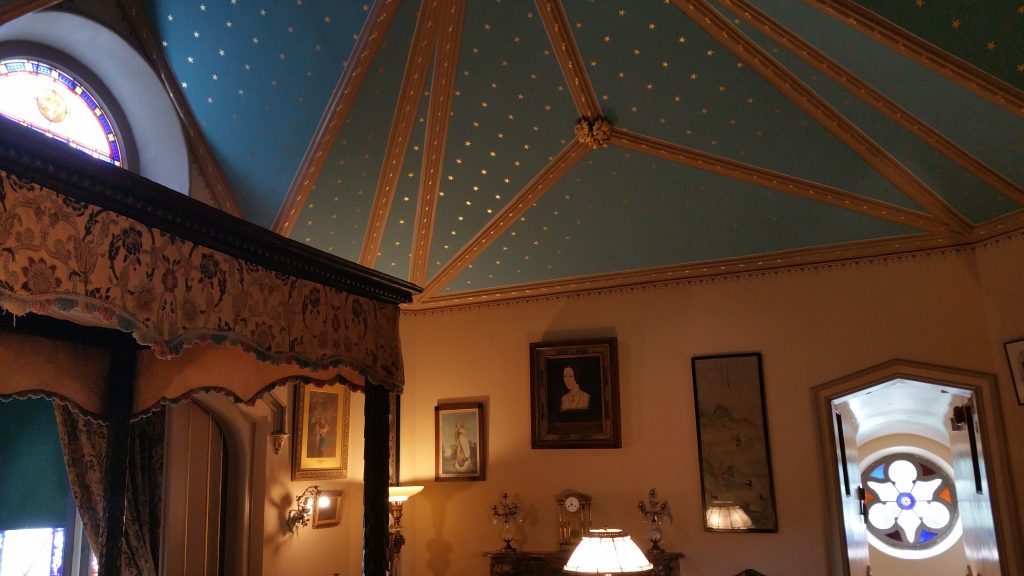
Used primarily in the spring and early summer, the estate grounds were as impressive as the home itself, maintained for over 40 years by master German gardener Ferdinand Mangold. Vast rolling lawns lead down to the Hudson, with intimate gardens located closer to the home. Winding walkways crossed the estate, leading to the indoor swimming pool and bowling pavilion.
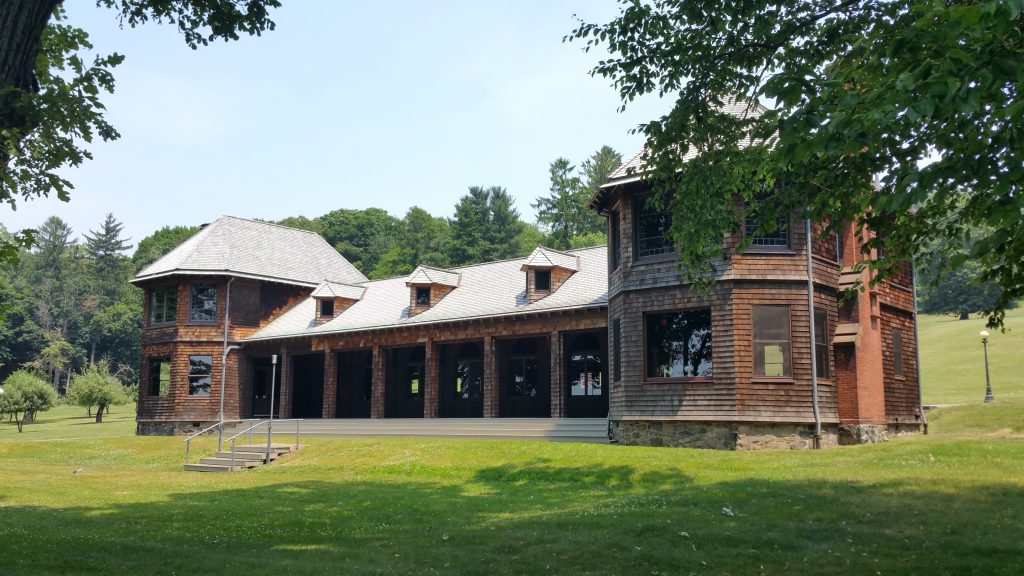
In 1891, Gould added a Lord & Burnham glass and steel greenhouse, a replacement for Merritt’s elaborate wooden model that was destroyed by fire. At over 19,000 square feet, it was the largest private greenhouse in the country. Upon Gould’s death, his daughter donated 230 orchids and palms from his collection to the New York Botanic Garden. Although the greenhouse still exists, it is a shadow of its former self, with only the steel skeleton intact.

Although a magnificent property all around, the genius of Lyndhurst is in the details. Nothing has been overlooked here, from the faux finishes that adorn the walls, to the elegant arched entryways and spectacular stained glass. Filled with the original furnishings and artwork, clearly the best money could by, one is almost transported back to the Gilded Age. While it may showcase the extreme excess of the era, it also highlights the magnificent architectural design and high quality workmanship that can be achieved when money is not an issue.
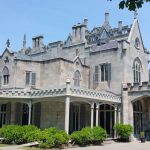
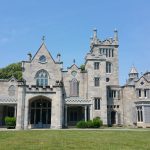







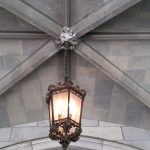







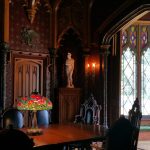


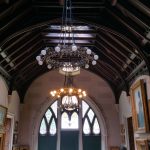

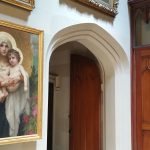



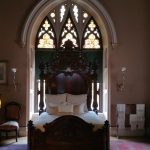



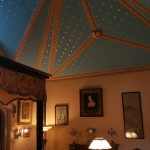




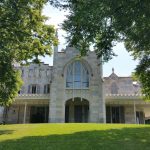


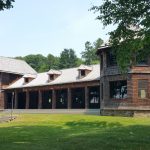








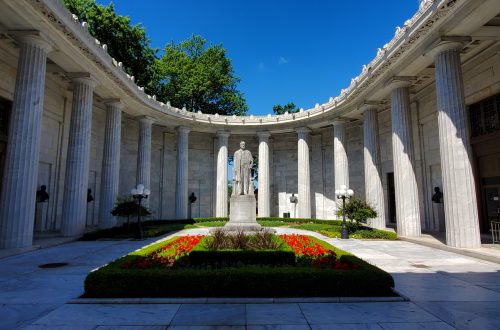
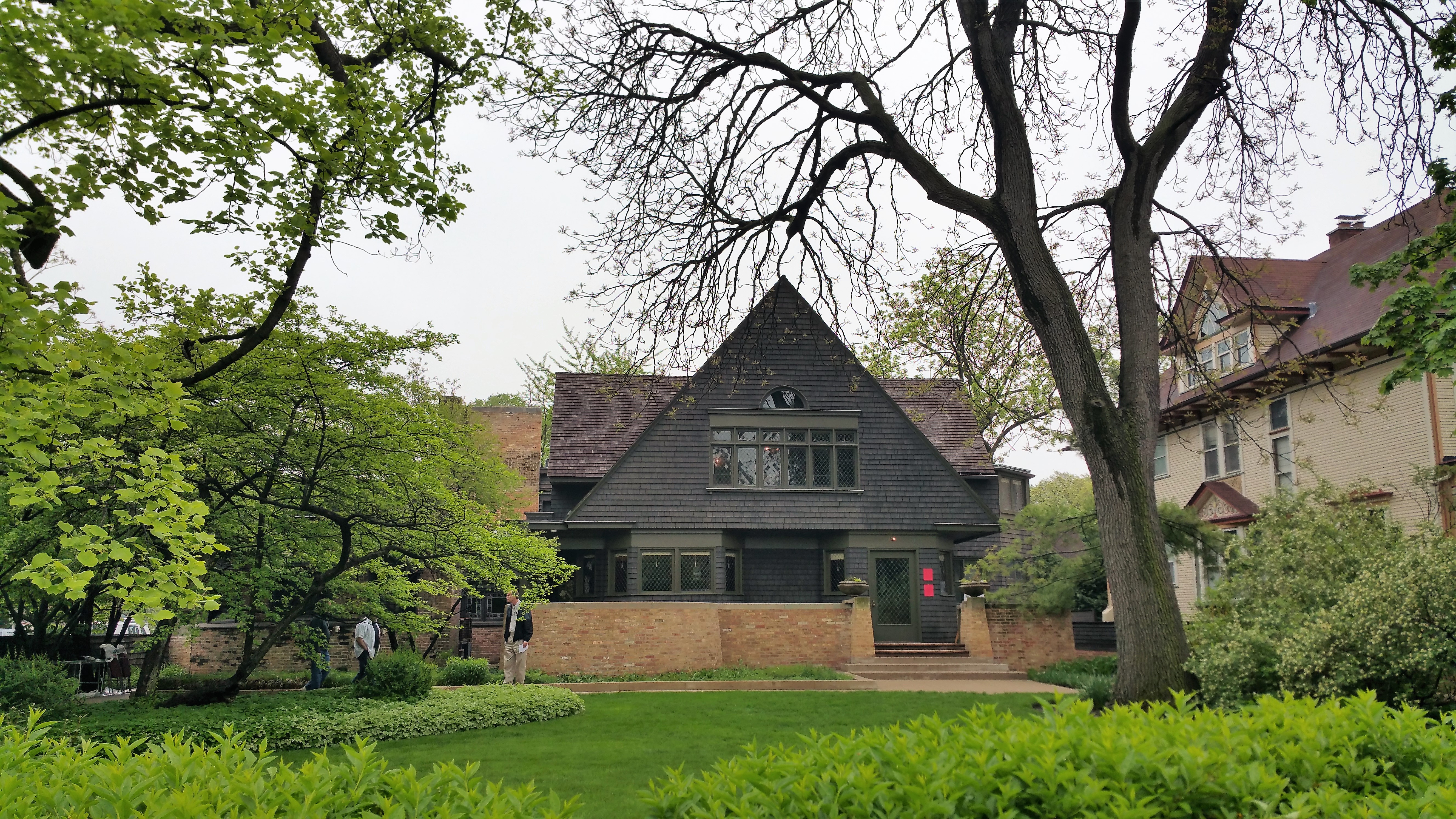

One Comment
Pingback: